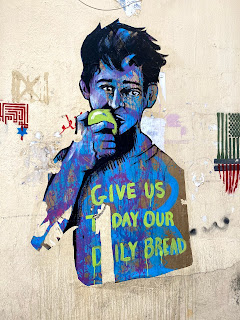As per the Universal Declaration on Human Rights, everyone has the right to have their own identity. In fact, of one of the 2030 Sustainable Development Goals, 16.9, calls on the "legal identity for all, including birth registration, by 2030" (UN, 2020); since it serves as a gateway to "legal protections as well as essential services and social supports across the lifespan" (Sanders & Burnett, 2019).
In 2018, the non-governmental organization, ID2020 Alliance Partners, partnered with the United Nations Higher Commissioner for Refugees (UNHCR) to address the issue of identity. The ID2020 approach was exceptionally unique; intertwining the right to identity with the current digital era (ID2020, 2020). Considering that globally, around 1 billion people do not have a formally recognized identity, ID2020 aim to support those without an identity (particularly refugees, migrants, and vulnerable groups) through creating digital identities (ID2020, 2020).
ID2020 has already been implemented in collaboration with the Government of Bangladesh, since there are high seasonal migration patterns related to climate change and inclination of flooding (Gruener, Chowdhury, & Fowlie, 2019). Considering that many Bangladeshis do not have any form of identity, this poses multiple challenges; majorly proof of child vaccinations. In this context, ID2020 was used to give a form of identity that would not be lost in migration patterns, and keep track of vaccinations (PR Newswire, 2019). The use of digital IDs is not alien– in fact, countries like Ecuador and India have established these systems and for a myriad of uses, such as voting and access to healthcare (Gruener, Chowdhury, & Fowlie, 2019).
So how will ID2020 address the public health issue of identity? Well, according to Accenture, who has joined the ID2020 for the technology that will be used; identity can be configured with the use of Blockchain and Biometric technology. The process goes as follows (ID2020, 2020):
1) Identity configuration through scanning fingerprints, iris scan, voice, etc.
2) A unique identifier is generated from these scans that is fully secure.
3) The identifier is then added to a Blockchain that will be the 'cloud' that links all data related to the individual onto one system for easier location.
4) The individual creates a profile on the designated application, and can even generate their own signature for use in transactions.
5) A QR code is generated for use at stations of identification.
6) The individual chooses who and what type of information is being shared with third party entities.
According to Accenture, the individual is in total control of what is being shared, and the data stored on the Blockchain is kept confidential and secure. However, it is worth noting that this data on the Blockchain is interoperable between organizations, and can be used for background checks since the data remains in the same place (ID2020, 2020).
There have been some conspiracy theories related to ID2020 and its use thus far. These conspiracy theories were majorly related to ID2020 being a form of government control. For example, it being linked to microchipping homeless people, and how the COVID-19 pandemic was created on purpose as a mean to galvanize ID2020 technology and force vaccinations (Parker, 2020). Although experts quickly shut down these rumors, online searches for ID2020 surged in March of 2020 in response to the rumors regarding the COVID-19 pandemic (Parker, 2020).
What do we think so far? Does it sound more like a dream or a nightmare? Share your thoughts!
On a final note, its always important to remember the following:
1) We should try to limit misinformation and not spread it– check your information before spreading it.
2) Be cautious of how you portray information– you never want to instill fear and panic, especially in a pandemic.
3) ID2020 is voluntary, thus it is always important to weigh the benefits vs. the risks.
Until next time,
S
References
ID2020. (2020). Digital Identity Alliance. Retrieved from: https://id2020.org
Gruener, D., Chowdhury, A., & Fowlie, G. (2019). Opinion: The case for 'good' digital identity. Devex. Retrieved from: https://www.devex.com/news/opinion-the-case-for-good-digital-identity-95906
Parker, B. (2020). What is ID2020? The New Humanitarian. Retrieved from: https://www.thenewhumanitarian.org/news/2020/04/15/id-2020-coronavirus-vaccine-misinformation
PR Newswire. (2019). ID2020 Alliance launches digital ID program with Government of Bangladesh and Gavi, announces new partners at annual summit. PR Newswire. Retrieved from: https://www.prnewswire.com/news-releases/id2020-alliance-launches-digital-id-program-with-government-of-bangladesh-and-gavi-announces-new-partners-at-annual-summit-300921926.html
Sanders, C., & Burnett, K. (2019). A Case Study in Personal Identification and Social Determinants of Health: Unregistered Births among Indigenous People in Northern Ontario. International journal of environmental research and public health, 16(4), 567. https://doi.org/10.3390/ijerph16040567
UN. (2020). SDG Indicators. Retrieved from: https://unstats.un.org/sdgs/metadata/?Text=&Goal=16&Target=16.9
Image: Retrieved from: https://www.accenture.com/us-en/insight-blockchain-id2020



Comments
Post a Comment